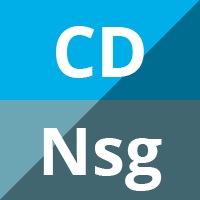Abstract
Background
Brain arteriovenous malformations (AVMs) are the single most common cause of intracerebral haemorrhage in young adults. Brain AVMs also cause seizure(s) and focal neurological deficits (in the absence of haemorrhage, migraine or an epileptic seizure); approximately one‐fifth are incidental discoveries. Various interventions are used in an attempt to eradicate brain AVMs: neurosurgical excision, stereotactic radiosurgery, endovascular embolization, and staged combinations of these interventions. This is an update of a Cochrane Review first published in 2006, and last updated in 2009.
Objectives
To determine the effectiveness and safety of the different interventions, alone or in combination, for treating brain AVMs in adults compared against either each other, or conservative management, in randomized controlled trials (RCTs).
Search methods
The Cochrane Stroke Group Information Specialist searched the Cochrane Stroke Group Trials Register (last searched 7 January 2019), the Cochrane Central Register of Controlled Trials (CENTRAL; 2019, Issue 1) in the Cochrane Library, MEDLINE Ovid (1980 to 14 January 2019), and Embase OVID (1980 to 14 January 2019). We searched international registers of clinical trials, the contents pages of relevant journals, and bibliographies of relevant articles (November 2009). We also contacted manufacturers of interventional treatments for brain AVMs (March 2005).
Selection criteria
We sought RCTs of any intervention for brain AVMs (used alone or in combination), compared against each other or against conservative management, with relevant clinical outcome measures.
Data collection and analysis
One author screened the results of the updated searches for potentially eligible RCTs for this updated review. Both authors independently read the potentially eligible RCTs in full and confirmed their inclusion according to the inclusion criteria. We resolved disagreement by discussion. We assessed the risk of bias in included studies and applied GRADE.
Main results
We included one trial with 226 participants: A Randomized trial of Unruptured Brain Arteriovenous Malformations (ARUBA), comparing intervention versus conservative management for unruptured brain AVMs (that had never bled). The quality of evidence was moderate because we found just one trial that was at low risk of bias other than a high risk of performance bias due to participants and treating physicians not being blinded to allocated treatment. Data on functional outcome and death at a follow‐up of 12 months were provided for 218 (96%) of the participants in ARUBA. In this randomized controlled trial (RCT), intervention compared to conservative management increased death or dependency (modified Rankin Scale score ≥ 2, risk ratio (RR) 2.53, 95% confidence interval (CI) 1.28 to 4.98; 1 trial, 226 participants; moderate‐quality evidence) and the proportion of participants with symptomatic intracranial haemorrhage (RR 6.75, 95% CI 2.07 to 21.96; 1 trial, 226 participants; moderate‐quality evidence), but there was no difference in the frequency of epileptic seizures (RR 1.14, 95% CI 0.63 to 2.06; 1 trial, 226 participants; moderate‐quality evidence). Three RCTs are ongoing.
Authors’ conclusions
We found moderate‐quality evidence from one RCT including adults with unruptured brain AVMs that conservative management was superior to intervention with respect to functional outcome and symptomatic intracranial haemorrhage over one year after randomization. More RCTs will help to confirm or refute these findings.
Plain language summary
Interventions for treating abnormal tangles of blood vessels in the brain in adults
Question
Do treatments for adults with abnormal tangles of blood vessels in the brain prevent death, disability and stroke due to bleeding compared to usual medical care?
Background
Abnormal tangles of blood vessels in the brain, known as brain arteriovenous malformations (AVMs) are the single most common cause of stroke due to bleeding in the brain (known as intracerebral haemorrhage, or ICH) in young adults. Brain AVMs can also leave young people disabled for life and cause epilepsy. How they should be treated, if at all, is highly controversial. The main options are: 1) medical treatment of epileptic seizures and headaches (sometimes known as ‘conservative management’); or 2) one or more of the following ‘interventional’ treatments: neurosurgery, endovascular embolization (glue, coils, or particles are lodged within the AVM via a catheter inserted temporarily in the groin), or radiosurgery (a non‐invasive treatment involving focused beams of radiation).
Search date
14 January 2019
Study characteristics
We found one published randomized controlled trial, including 226 adults.
Key results
We found moderate‐quality evidence of harm (stroke due to bleeding in the brain, and death or dependency) over one year of follow‐up from interventional treatments compared to conservative management for adults who had a brain AVM that had never bled. The long‐term risks are unknown.
Quality of the evidence
Overall, the quality of the evidence was moderate because there was just one trial and it did not use blinding. More information will become available from the three trials that are ongoing.


